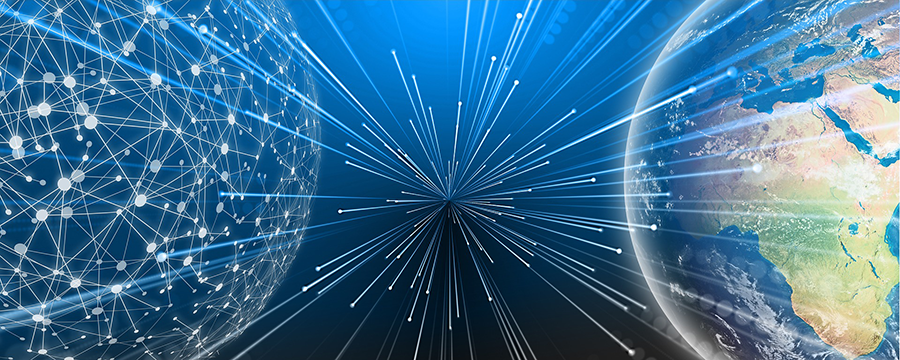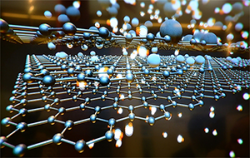
How to pull the 4th Industrial Revolution towards Cleantech days?
The modern world is highly proud of the technological progress made over the last two centuries. A well-known story of stepwise success: First, the development of commercial steam engines made the mechanized looms possible in the 18th century. The mechanization of the workforce later paved the road for large-scale factories during the late 1900s. Then, the automation of mechanical labor marked the third chapter of our industrialization journey by the 1970s. Nowadays, while moving forward towards machine learning, cloud computing, and related technologies, we welcome the so-called “Industry 4.0” as termed in 2011. For some people, “it is hype!” Still, hype or not, Industry 4.0 is changing the world as we know it pretty fast. Governments and companies are pouring generous resources to excel in this business and win the race. Researchers, even from remote areas, are trying to catch up. And, software and data professions are already the dream jobs of the young generations (Millennials and Generation Z)! But weren’t we trying to save the world just less than a decade ago? What happened to the “Cleantech Revolution?”
Where is the industry heading?
From academics to industrial players and governments, everyone was talking about “clean technologies” in the 2000s. Particularly the solutions offered by biotechnology and nanotechnology were considered game-changers for renewable energy transformation, low-carbon transportation, energy-efficient water treatment, and advanced recycling, to name a few. We had thick books dedicated to the potential of environmentally friendly technologies (e.g., “The Clean Tech Revolution: The Next Big Growth and Investment Opportunity,” by Ron Pernick and Clint Wilder, 2007). The hopes were big. Cleantech movement was a “jobmaker” and rescuer of our Earth; likely one of the key reasons behind the consensus that later gave us the Paris Agreement (in 2016).
 Then, Industry 4.0 emerged, the phase everything is interconnected for the better and worse. Probably better for most with its promises, but perhaps eventually worse for all unless the core motivation becomes sustainability and even ecological recovery. Surely, there are considerable efforts to fighting sustainability issues using the technologies related to Industry 4.0. For example, the tools enabling the digital transformation of industries are practically useful for enhancing resource productivity, as well. (And, smart management of resources improves our environmental performance.) However, can we rest assured that the natural flow of market dynamics will transform Industry 4.0 into a sustainability revolution?
Then, Industry 4.0 emerged, the phase everything is interconnected for the better and worse. Probably better for most with its promises, but perhaps eventually worse for all unless the core motivation becomes sustainability and even ecological recovery. Surely, there are considerable efforts to fighting sustainability issues using the technologies related to Industry 4.0. For example, the tools enabling the digital transformation of industries are practically useful for enhancing resource productivity, as well. (And, smart management of resources improves our environmental performance.) However, can we rest assured that the natural flow of market dynamics will transform Industry 4.0 into a sustainability revolution?
The Importance of Public Awareness and Greener Technologies
As far as I can see, the answer to the previous question is not positive. With or without Industry 4.0, the current direction of world economies is far from reaching sustainability goals in the foreseeable future. Growth-driven economic models already diminished the momentum of green technologies. And, the cleantech movement is unlikely to regain its popularity to be an integral part of our newly budding industrial revolution by itself. Therefore, to compensate, we must raise public awareness of the direct and indirect impacts of environmental destruction and climate change on human health and economies. By doing so, we might help shape the policy directions eventually. By informing the public adequately and influencing consumer behaviors, we may also expect to get some small but quick results. However, as the situation is quite alarming, we will need more. This picture brings us to the importance of academic and industrial research and development.
 With several major contributors spanning from the food supply and consumer products to transportation of goods/people, and defense, the environmental issues are highly complex. Therefore, it is hard to cover all aspects of it concisely and discuss here how research and development activities might address each one of them. Instead, I would like to share a couple of far-reaching notions that are worth underlining. First of all, we may gravitate towards a sustainable future just in case industrial leaders/scientists/engineers, entrepreneurs, and politicians become more environmentally motivated. Because significant changes are related to large-scale operations, and those people are often the gatekeepers. Second, if academic research does not manage to provide clear paths for the development of economically competitive environmental solutions, we will still likely fail in the long run. Because economic concerns are hard to ignore totally.
With several major contributors spanning from the food supply and consumer products to transportation of goods/people, and defense, the environmental issues are highly complex. Therefore, it is hard to cover all aspects of it concisely and discuss here how research and development activities might address each one of them. Instead, I would like to share a couple of far-reaching notions that are worth underlining. First of all, we may gravitate towards a sustainable future just in case industrial leaders/scientists/engineers, entrepreneurs, and politicians become more environmentally motivated. Because significant changes are related to large-scale operations, and those people are often the gatekeepers. Second, if academic research does not manage to provide clear paths for the development of economically competitive environmental solutions, we will still likely fail in the long run. Because economic concerns are hard to ignore totally.
 It is perhaps a more biased view, but I also believe that we need disruptive materials technologies to address various existing environmental problems. Solar cells, as well as long-lasting and rechargeable batteries, are good examples of the transformative potential of materials-related technologies. Fortunately, membrane and adsorption technologies also hold a great promise to make a similar impact soon, if not greater. After decades of fundamental research, we are close to obtaining efficient material platforms for the capture and sequestration of several greenhouse gases. In a recent study, for example, I contributed to the development of an innovative yet simple membrane platform for recovering methane from the effluents of wastewater treatment plants. Pureosity also provided a wide range of innovative and potentially feasible membrane technologies for tackling various environmental issues recently, one of the main reasons behind my interest in joining the team.
It is perhaps a more biased view, but I also believe that we need disruptive materials technologies to address various existing environmental problems. Solar cells, as well as long-lasting and rechargeable batteries, are good examples of the transformative potential of materials-related technologies. Fortunately, membrane and adsorption technologies also hold a great promise to make a similar impact soon, if not greater. After decades of fundamental research, we are close to obtaining efficient material platforms for the capture and sequestration of several greenhouse gases. In a recent study, for example, I contributed to the development of an innovative yet simple membrane platform for recovering methane from the effluents of wastewater treatment plants. Pureosity also provided a wide range of innovative and potentially feasible membrane technologies for tackling various environmental issues recently, one of the main reasons behind my interest in joining the team.
I hope that Industry 4.0 will not be a distraction to our mission of keeping Earth livable for all. In contrast, I hope that it will facilitate the development and strengthen the actual impact of greener technologies. And, while our industries/economies are remodeling before our eyes, platforms like Global Voices will reach the general public. Encouraged with the power of knowledge, non-scientists will hopefully demand the prioritization of sustainability goals more actively.  To this end, I would like to call all, one more time, to contribute our historical duty of curbing human-caused environmental degradation, no matter large or small. After all, we seemingly have, give or take, a couple of decades more before the free fall of our Planet, if we are not already in the midst of it.
To this end, I would like to call all, one more time, to contribute our historical duty of curbing human-caused environmental degradation, no matter large or small. After all, we seemingly have, give or take, a couple of decades more before the free fall of our Planet, if we are not already in the midst of it.
Further Reading
Bonilla, S., Silva, H., Terra da Silva, M., Franco Gonçalves, R., & Sacomano, J. (2018). Industry 4.0 and Sustainability Implications: A Scenario-Based Analysis of the Impacts and Challenges. Sustainability, 10, 3740.
Luthra, S., Kumar, A., Zavadskas, E. K., Mangla, S. K., & Garza-Reyes, J. A. (2019). Industry 4.0 as an enabler of sustainability diffusion in supply chain: an analysis of influential strength of drivers in an emerging economy. International Journal of Production Research, 1–17.
Nahavandi, S. (2019). Industry 5.0—A Human-Centric Solution. Sustainability, 11(16), 4371.
Pernick, R., Wilder, C., CleanEdge, Pernick, R., & Wilder, C. (2009). Clean Tech Job Trends 2009. Retrieved from https://insideclimatenews.org/sites/default/files/Clean Edge-JobsTrends.pdf
Sharifzadeh, M., Triulzi, G., & Magee, C. L. (2019). Quantification of technological progress in greenhouse gas (GHG) capture and mitigation using patent data. Energy & Environmental Science, 12(9), 2789–2805.
Stocker, A., Gerold, S., Hinterberger, F., Berwald, A., Soleille, S., Morgan, V. A., & Zoupanidou, E. (2015). Study on the Interaction of Resource and Labour Productivity. https://doi.org/10.2779/443157






